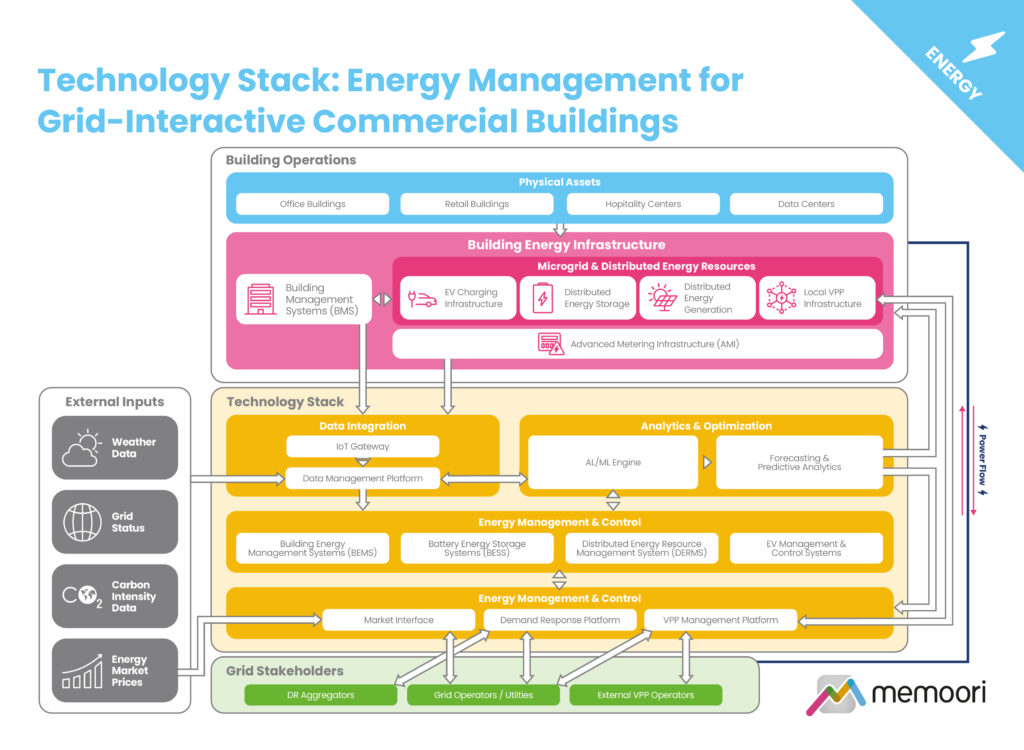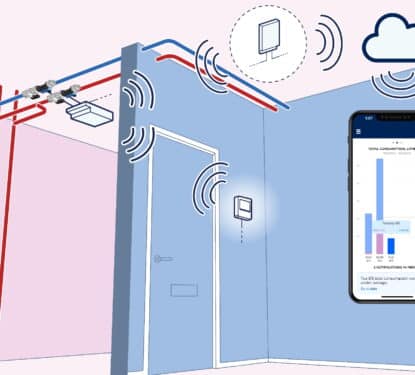Here is the recording from the live discussion on our New Research into the Market for Grid-Interactive Buildings!
The commercial real estate sector is undergoing a fundamental transformation in how buildings interact with and manage energy resources. Grid-Interactive Buildings are emerging as a critical solution for property owners facing mounting pressures from rising energy costs, stringent regulatory requirements, and ambitious carbon reduction targets.
The Grid-Interactive Buildings Technology Stack
Our infographic provides an overview of how commercial buildings integrate with the electrical grid using advanced energy management technologies and DERs. It highlights the relationships between building operations, the technology stack, and the grid stakeholders. It shows the interconnected systems and data flows that optimize energy use, enable grid services, and allow buildings to generate and manage energy locally.

Market Breakdown & Sizing
The global market for energy management software in Grid-Interactive Buildings can be broken down into 4 key application areas, each serving distinct functions that support grid reliability, optimize energy usage, and enhance building flexibility. Demand Response & Virtual Power Plants (VPPs), Distributed Energy Resource Management Systems (DERMS) & Microgrids, Distributed Energy Storage software, and EV Charging & Flexible Load Management solutions.
The global market for energy management software in Grid-Interactive Efficient Buildings (GEBs) is poised for significant growth. Our new report projects revenues to increase from $2.98 billion in 2023 to $4.88 billion by 2029, representing a compound annual growth rate (CAGR) of 8.56%. This expansion is driven by increasing regulatory pressures, rising energy costs, and the growing demand for building energy resilience.



